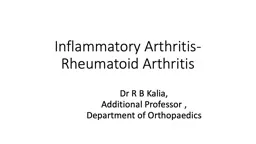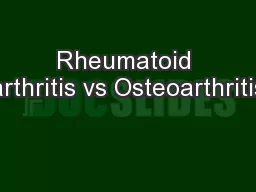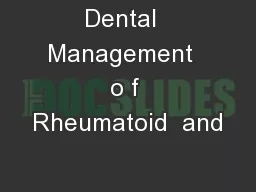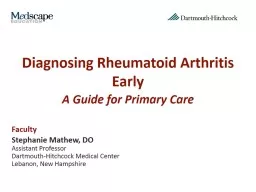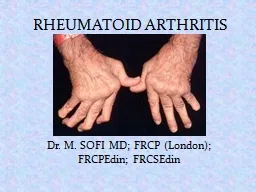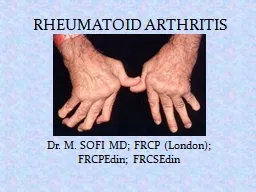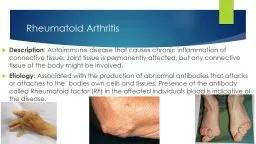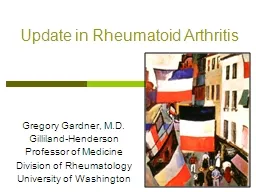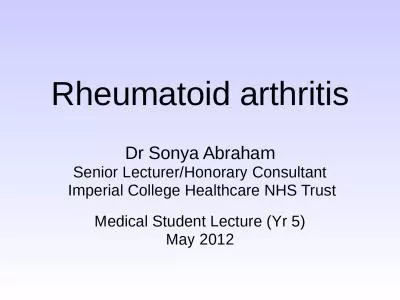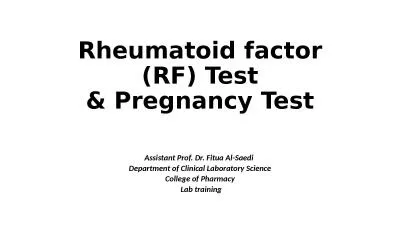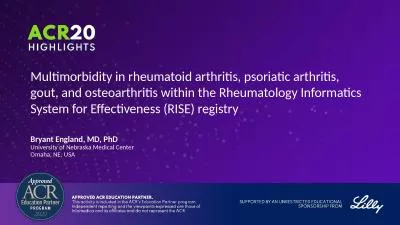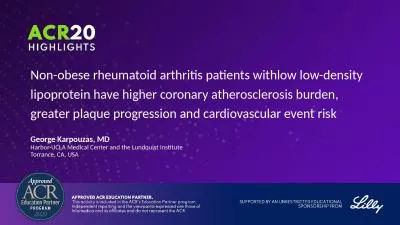PPT-Inflammatory Arthritis- Rheumatoid Arthritis
Author : tatiana-dople | Published Date : 2020-04-04
Dr R B Kalia Additional Professor Department of Orthopaedics Leaning Objective Clinical Features of RA Investigations Diagnosis Indications for Surgery in Arthritis
Presentation Embed Code
Download Presentation
Download Presentation The PPT/PDF document " Inflammatory Arthritis- Rheumatoid Arth..." is the property of its rightful owner. Permission is granted to download and print the materials on this website for personal, non-commercial use only, and to display it on your personal computer provided you do not modify the materials and that you retain all copyright notices contained in the materials. By downloading content from our website, you accept the terms of this agreement.
Inflammatory Arthritis- Rheumatoid Arthritis: Transcript
Download Rules Of Document
" Inflammatory Arthritis- Rheumatoid Arthritis"The content belongs to its owner. You may download and print it for personal use, without modification, and keep all copyright notices. By downloading, you agree to these terms.
Related Documents

